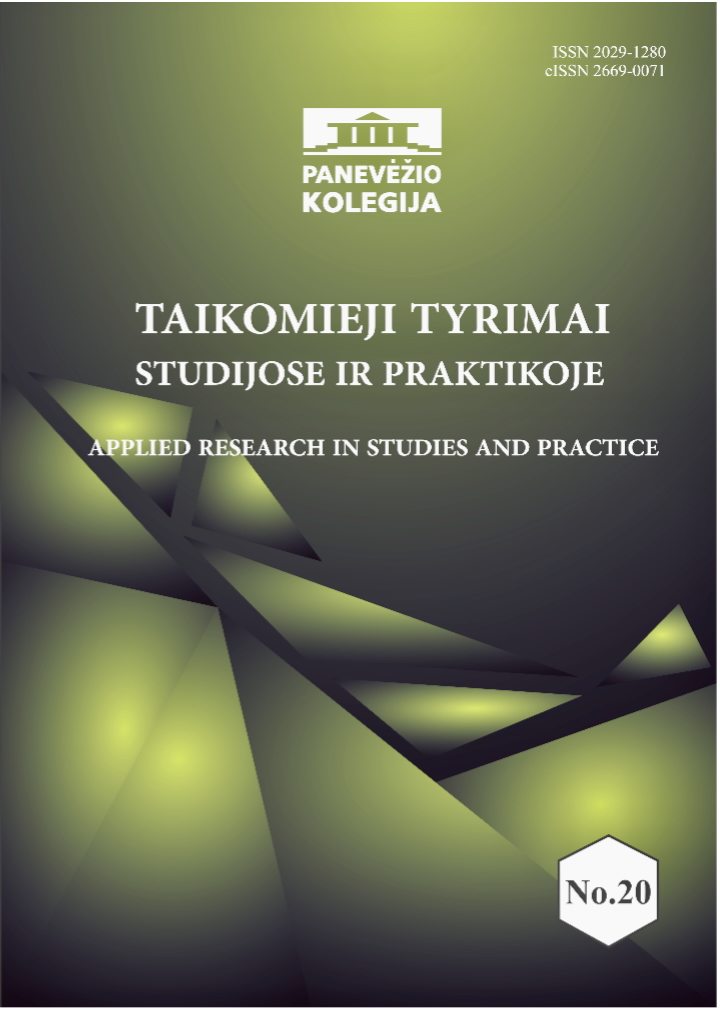PUBLIC CONSUMPTION OF MICROPLASTICS AND AWARENESS ABOUT POTENTIAL HEALTH EFFECTS AND PREVENTION
Keywords:
microplastics, public awareness, health effects, prevention, environmental pollutionAbstract
Worryingly widespread and extremely durable, microplastics are harmful because they release toxins and contaminants all over the world. Microplastics are also thought to be vectors for transmitting diseases and toxic substances, posing potentially serious health risks when inhaled and ingested by humans. The aim of the study was to investigate public consumption habits of microplastics and awareness about potential health effects and prevention. The tasks of the study were to investigate awareness of microplastics forms and possible routes of entry into the human body, to detect the knowledge of the presence of microplastics in human’s different tissues and organs and potential harmful health effects, to reveal plastics and microplastics consuming habits and awareness about prevention measures. Conclusions: Half of respondents were familiar with polyethylene, polyester, polyethylene terephthalate, one third-of styrene, nylon and polypropylene to be microplastics.Two third of participants reported that microplastics are found in human excretions and all human’s body. The majority of respondents were aware about the main routes of microplastics’ entry into human’s body, but there were gaps in their knowledge. More than half of respondents indicated hormonal disruption, cancerogenicity, allergies or asthma, weakening immunity and causing chronic inflammation as microplastics harmful health effects. The majority of respondents are using plastic bags and packages for foodstuffs, water and drinks in plastic bottles. Prevention measures, offered by the majority of respondents, were to sort plastic waste, to avoid plastic packages and bottles of foodstuffs and water, heating food in plastic dishes, though only half of respondents are sorting plastic waste, heating food in plastic-free dishes and wearing clothes made of natural fibers. Despite increased awareness, behaviors reflecting preventive actions remained inconsistent. The findings highlight the urgent need for better public education and regulatory action to mitigate microplastic exposure and its associated health risks.
The TOPSIS multi-criteria approach allows for a comprehensive and integrated assessment of the financial autonomy of municipalities by providing a single summary indicator composed of several revenues ratios.
The empirical research analyses the situation of the revenue potential of Panevėžys region municipalities, assessing the financial autonomy of municipalities in the period 2009-2022. The research shows that all municipalities in the region are very homogeneous in terms of revenue indicators and have a moderately low level of financial autonomy. The empirical results also show that municipalities' financial autonomy is changing slowly compared to the results of previous research. This confirms the dependence of municipalities on centralised financial management, which is governed by the legal acts that have a strong impact on the development of municipalities' financial autonomy and financial capability. Hence, the results in a way also show a lack of capacity on the part of municipalities themselves to seek opportunities to create sustainable, stable perspectives from an economic and social perspective.
Downloads
Published
Issue
Section
License
Copyright (c) 2024 Taikomieji tyrimai studijose ir praktikoje - Applied research in studies and practice

This work is licensed under a Creative Commons Attribution 4.0 International License.

This work is licensed under a Creative Commons Attribution 4.0 International License.
Please read the Copyright Notice in Journal Policy.



